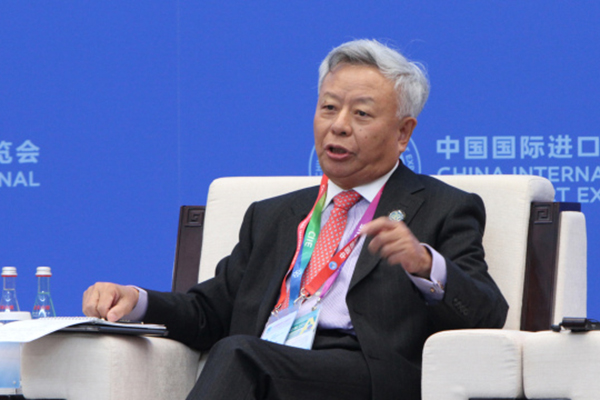[China Daily] He Weiwen: Does US want another trade failure?
February 19 , 2022Reuters reported recently that the United States’ deficit in goods trade with China increased by $45 billion to $355.3 billion in 2021, because China did not meet its commitments under the “phase one” trade agreement to purchase an additional $200 billion worth of US goods and services in two years.
The news agency quoted an official of a leading US business group as saying that the Joe Biden administration might take a set of measures, including launching Section 301 investigations and imposing additional tariffs on Chinese goods.
Also, the report claimed that Chinese goods import from the US declined in December, with the total imports for the whole of 2021 being less than that in 2017, the baseline year.
Agency report on imports incorrect
The calculation is incorrect. US Bureau of Economic Analysis data show that in December, China’s imports from the US increased by 13.0 percent year-on-year to $16.07 billion, with the total imports for the whole year being $151.07 billion, up 21.3 percent year-on-year-and 14.7 percent higher than in 2017($131.75 billion).
Indeed, the US’ goods trade deficit with China increased by $45 billion last year. But its global trade deficit shot up by $167.3 billion to exceed the $1 trillion mark for the first time in history. As a result, China’s share in the US’ total trade deficit declined from 34.1 percent in 2020 to 32.9 percent. Apparently, the US’ trade deficit swelled because of its strong import performance.
According to China’s customs statistics, which are different from the US Bureau of Economic Analysis data, Chinese imports from the US reached $179.53 billion in 2021, up 32.7 percent year-on-year-and higher than the 30.1 percent from all sources and overall US exports growth of 23.1 percent. It shows China has been serious about purchasing US goods and services.
True, the “phase one” trade agreement includes China’s commitment to purchase additional US goods and services worth $200 billion (including $162.1 billion of goods) in two years. But it does not stipulate the actual import volume in 2021.
Import process a lengthy affair and conditional
According to common trade practices, commitments and imports include memorandums and purchase agreements, but not all of them turn into actual contracts. And not all actual contracts turn into actual imports. Besides, the entire import process may not necessarily be completed in the year the contract is signed, because deliveries-of capital goods and agricultural products-could take months, if not years.
There is also a price and market condition clause in the “phase one” agreement:”The Parties acknowledge that purchases will be made at market prices based on commercial considerations”.
This means purchase is conditional. If the US goods are not price competitive vis-à-vis goods of other suppliers, purchase will not materialize. Plus, such purchases are done by companies, not the government, and only the companies can decide whether or not to buy based on their own commercial considerations. In other words, a lower-than-committed purchase volume is not necessarily a violation of the agreement.
There is a US factor clause, too, in the agreement:”If China believes that its ability to fulfill its obligations under this Chapter is being affected by an action or inaction by the United States or by other circumstances arising in the United States, China is entitled to request consultations with the United States.”
The US factor has acquired added significance over the past two years. First, the political handicap. The US has put more than 600 Chinese businesses and institutions on its Entity List and restricted or prohibited the sale of US semiconductor chips and other high-tech products to Chinese companies.
Second, the supply inability. In 2020, due to the pandemic and the resulting recession, the US’ total exports fell by 13.3 percent, but US exports to China increased 9.9 percent. Also, while overall US exports grew by only 6.8 percent from 2019 to 2021, US exports to China rose by 46 percent.
That shows China has increased imports from the US and fulfilled its commitments to a much larger extent than other countries and regions, even though the US could not supply enough products and services to meet the demand.
Of course, the grounding of the entire Boeing 737 MAX 8 fleet due to technical and design faults related to the automated software known as MCAS, which were blamed for possibly causing two crashes in 2019, and the disruptions in the global supply chains and cargo congestion at seaports because of the COVID-19 pandemic also contributed to the delay in the supply of US goods and services.
Force majeure clause in deal
Moreover, the “phase one” trade deal has a force majeure clause:”In the event that a natural disaster or other unforeseeable event outside the control of the Parties delays a Party from timely complying with its obligations under this Agreement, the Parties shall consult with each other.” The outbreak and continuing impact of the pandemic have extensively affected global trade and caused serious disruptions in the supply chains.
And since the pandemic is an “unforeseeable event outside the control of the Parties”, the two parties should “consult with each other”. In fact, the “phase one” trade agreement contains a strict but comprehensive bilateral evaluation and dispute resolution arrangement that both sides must abide by.
Furthermore, in hindsight, 2020 should be considered a lost year, and the years 2020 and 2021 should be counted as one year. If so, the terms of purchase should be extended by another year. Perhaps the two sides should also evaluate whether the $200 billion target is practical judging by the real experiences, and whether an appropriate revision is required.
And if an evaluation is required, the two sides should ensure it is sincere and transparent and mutually beneficial. If both parties adopt such an approach, it will not be difficult for them to settle the purchase issue. But if the US resorts to unilateral actions again, it would be violating the “phase one” trade deal, which would render the entire deal null and void and free China from the compulsion of purchasing goods and services from the US.
Tariffs can’t stop growth in sales of Chinese goods
Joe Biden seems to have forgotten the bitter lessons his predecessor learned. The current tariffs on $370 billion of Chinese goods, imposed by Donald Trump and maintained by Biden, have failed to stop the surge of Made-in-China products in the US market. According to Chinese customs data, the export of Chinese goods to the US last year hit a record high of $576.11 billion, up 27.5 percent year-on-year and 34 percent compared with the baseline year of 2017.
On the other hand, a Moody’s report shows that 92.4 percent of the tariffs on Chinese goods were being paid by the US importers, and ultimately by US businesses and families. No wonder the US lost $108 billion in GDP and 247,000 jobs in 2019-20. Actually, the tariffs have played a role in the skyrocketing inflation, the worst in more than 40 years, in the US, prompting many businesses and Congress members to appeal to the administration to lift the tariffs.
This shows the trade war launched by Trump, ostensibly to boost the US economy and teach China a “lesson”, has been an absolute failure. If Washington is bent on taking new unilateral measures, what else can it do? Launch more Section 301 investigations? But then China will again sue it in the World Trade Organization. And again the ruling could be against the US for violating WTO rules.
Maybe the US will impose new tariffs? In that case, both Chinese exports to and inflation in the US will continue to rise. Is this what Washington wants?
Topical News See more






